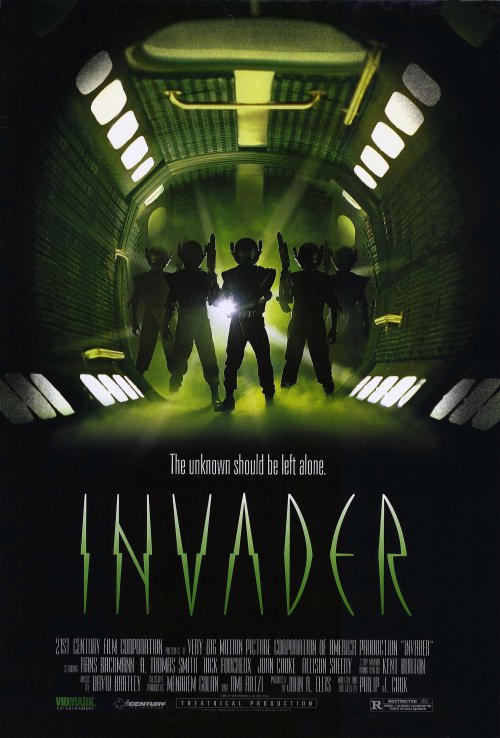The horror fan can sometimes feel left out - there are so many acclaimed classic movies out there, but why do so few of them feed their need for horrific kicks? I'm sure there's a Mummy fan out there who wished The English Patient had more attacking Ramses offspring, and I can tell you that Fred Astaire is rolling in his grave for not having the chance to make a vampire musical complete with dancing bats. Sunset Boulevard needs no replacement or upgrade - it's wickedly smart and grandly cynical, a gem that only gains more lustre with each passing year. Of course, there weren't any psychedelic chop-up-your-mother drug-trip sequences, and Savage Intruder (aka Hollywood Horror House) sets out to fill that gap and much more. AWOL soon after its release, the movie has languished in obscurity save for a few super-rare VHS releases, and luckily Scarecrow Video in Seattle had a copy of the Unicorn Video release, which I happily duped. After reading Bleeding Skull's review I wasn't sure what to expect, but luckily I found a smart, surprisingly well made riff on Wilder's classic with a lot of energy and style to keep things fresh.
The opening credits play out over a haunting, exquisitely shot ruin - the Hollywood sign. I should warn you that some body parts may rear their ugly (lone) head.
This leads into a news report about a rash of murders of middle-aged women in the Hollywood area, and another woman nearly gets her hand electric-carved off before screaming loud enough to attract attention. A tour bus stops in view of the mansion of the once-starpowerful Katharine Packard (real-life ex-star Miriam Hopkins, The Invisible Man), and Vic (David Garfield), a hippie-esque 30-something gets off the back bumper with bags in hand. He insinuates himself into the household of the newly wheelchair-bound Packard by claiming to be a nurse, and while the unhinged, alcoholic Packard appreciates the young, attractive company the movie makes it very clear that Vic is the biddy-killer, bringing his knives and mommy issues with him.
While this could have been a tired retread of Psycho/Psycho-Biddy tropes, onetime writer/director/producer Donald Wolfe had savvier plans for his baby. The camerawork is a joy to see from a novice director, working with the interiors of Packard's mansion to drive the viewer through to suspense and keep something interesting on screen to look at. The editing is quick on its feet, and judicious use of odd lenses lets certain moments, like a falling vodka bottle, grip the eye and inspire the retina's color cones. While the film is a knowing nod to classic Hollywood, complete with engagingly hokey acting and a credited gown supplier for Miriam Hopkins, these nods are balanced with the scunge and counterculture malaise of the early-70's Hollywood strip, leading Packard to bemoan the town's "hooligans and queers" in a breakdown during a real-life Christmas parade. The horror elements are steeped in that first-half-of-the-70's grimy abandon we've come to love so well, and while the violence is spread out quite a bit it is a bit shocking for the time (though all the victims have blood type Sherwin Williams+). Miriam Hopkins gleefully eats the scenery, swaying and cackling and having a ball just like she should, and David Garfield as Vic is quite creepy, even if his mommy issues are no more developed than his inner child coming across mommy in a hairy, fish-eye-lensed swinger party and chopping her hand off with an ax. Composer Stu Phillips had a good time writing the movie's score, and while it never strays too far from the horror toolbox there's a lot of small details to perk the eardrums. The dream sequences are dated as all Sam Hill, so if you can't take Yellow Submarine checkerboard hallways and sub-Doors organ freakouts you may want to keep away. I'd be in remiss if I didn't tell you about how the pacing screeches to a halt 15 minutes from the end, but I wasn't too mad by that point and if you want to see the thing after all I've said it probably won't bother you either.
Don't bother trying to hunt down the VHS unless you've got a few hundred dollars lying around and a taste for gambling with old tape quality. Not only have the bootleggers made it easy one company has made it a 70's horror double feature. Behold Just For the Hell of It's Dear Dead Delilah/Savage Intruder double feature, and dang does that look like $30 well spent. Dear Dead Delilah is a quirky, violent Southern Gothic treat from novelist John Farris that makes up for its long-haul talk scenes with witty overacting and saucy, melodramatic familial hatred. I'm sure other companies can get you your fix otherwise, so if you've got a hankering for savvy-yet-bloody horror with a satirical bent Savage Intruder will suit your gullet well. Why would you want Hollywood to make more classics anyways? It's all hooligans and queers now - Katharine told me so.
(WARNING: GORE)
~PNK

























